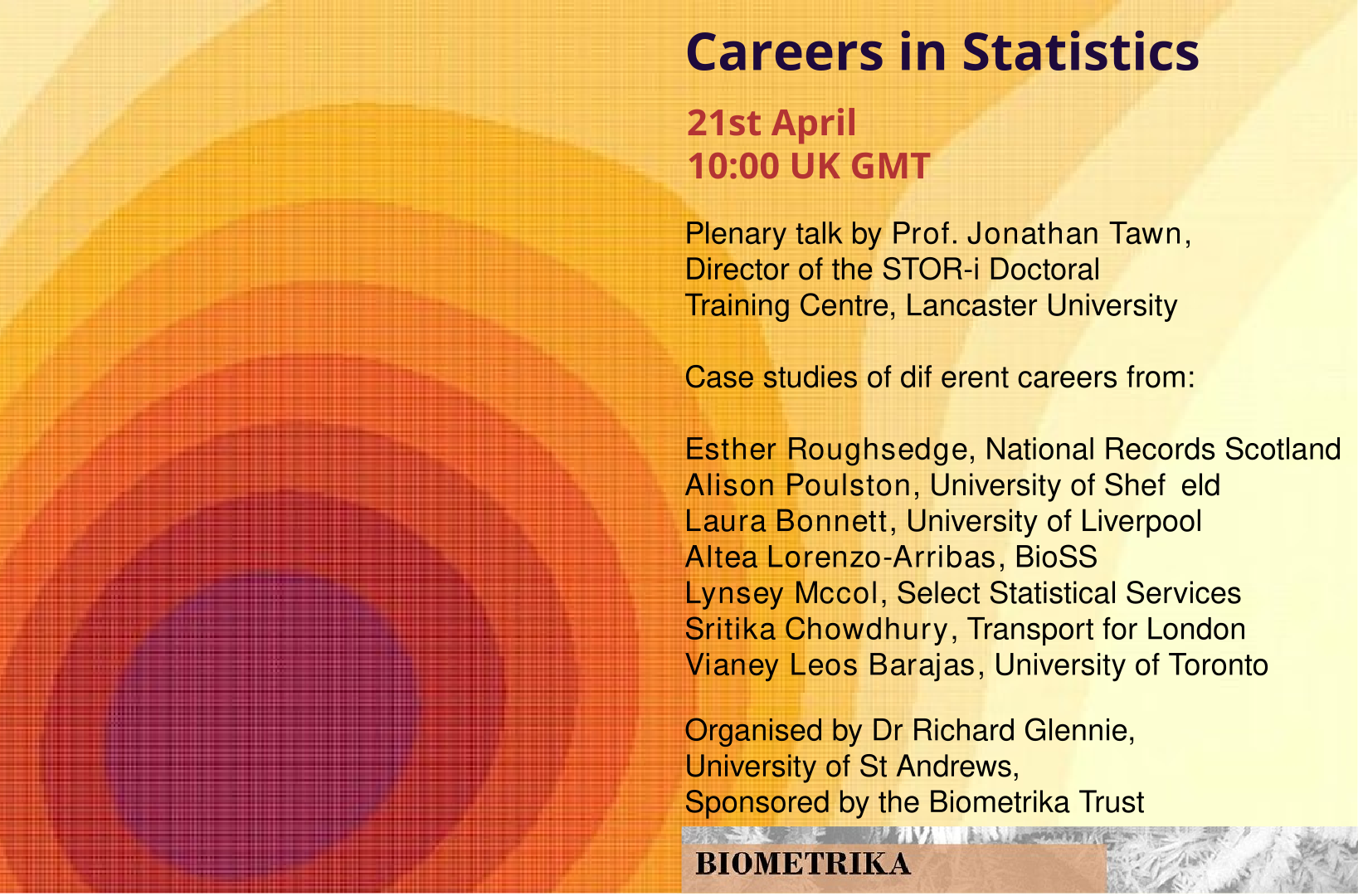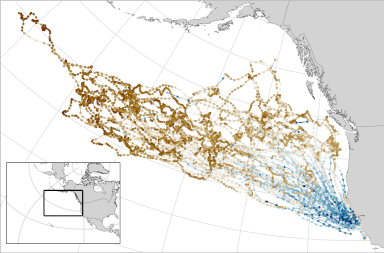
Statistician
✉ research@glennies.co.uk

Statistician
✉ research@glennies.co.uk
I was a Research Fellow at the University of St Andrews for four years, based in the Centre for Research into Ecological and Environmental Modelling. I won the Young Biometrician Award 2021 sponsored by the British and Irish Region of the International Biometric Society and the Fisher Memorial Trust, read more here.
My research focussed on stochastic processes that are latent or partially observed. This usually involved stochastic differential equations, hidden Markov models, smoothing techniques, and high-dimensional integrals. Below are some of the methods I worked on.
My PhD was about Incorporating Animal Movement with Distance Sampling and Spatial Capture-Recapture and was supervised by Stephen T. Buckland and Roland Langrock.

Education
Employment

I organised a one-day online conference on Careers in Statistics for MSc and PhD students in Statistics. The idea was to give people a taste of what statisticians do in their day-to-day work across a range of different careers. All talks were recorded and you can watch them on youtube (just click the pic or title above!)

Stochastic differential equations are one way to model processes that unfold over time, e.g. animal movement. These equations are controlled by parameters thay may change over time, space, or other covariates. This work provides a fast, simple framework for fitting these models with flexible, non-parametric covariate effects.

Hidden Markov models are widely used in Ecology as they provide an attractive correspondence between their statistical framework and how ecological systems can be conceptualized. This review paper is useful for ecologists who want to see the variety of applications HMMs could be used for. I was lucky enough to work with these experts in HMMs and contributed the sections on population-level processes.
Here is a brief summary for some of the projects I worked on:
This was part of work with the Atlantic Behavioural Response study and within the Double Mocha project. There are many challenges in this work: how to model three-dimensional animal movement, how to quantitatively identify if and how sonar exposure affects movement, and how to integrate inference across different tags and spatio-temporal scales.
The common bottlenose dolphin population in Barataria Bay was affected by the Deepwater Horizon Spill. McDonald et al. (2017) provided estimates of the survival probability and abundance in this population from photo ID surveys using open population spatial capture-recapture (openpopscr). Since then, more data has been collected and a more computationally efficient way to fit openpopscr models, allowing for inference to be extended in time and complexity.
The UK Hoverfly recording scheme is an opportunistic, citizen-science scheme that is growing in membership over the years and in the amount of data available over space and time. The challenge with drawing inference from these data is that species presence and sampling bias (in space and by observer ability) are confounded. In this project, I was working on developing a method that can make robust conclusions from these data and clearly defining what "robustness" refers to in this context.
There are many methods to fit animal movement models: HMMs can capture behavior-switching, crawl can efficiently handle continuous-time irregular location records and measurement error, MCMC methods can be used to capture step selection. One approach to combining these is an MCMC with multiple efficiencies made (e.g. Kalman filter), but I was working on an alternative approach that can be more efficient but still retain all these desirable components.
Software available from my GitHub page (software is unsupported).
occuR: R package to fit multi-season occupancy models with non-parametric smooths on occupancy and detection probability, combining Template Model Builder and mgcvCTMCdive: R package to fit continuous-time Markov chain model with temporaly-varying smooth transition intensities (intended to model cetacean dive and surface durations).openpopscr: R
package to fit open population Jolly-Seber spatial capture-recapture models by
maximum likelihood.SimDs: source code to simulation line transect
distance sampling surveys with animals moving in 2D.